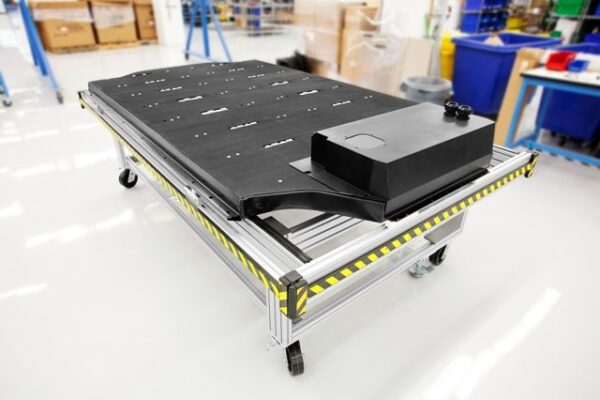
Newswatch: Tesla sketches out roadmap for the future?
By 2020 the company’s is forecasting theTesla vehicle volume would be @ 500 000 per year with the Gigafactory’s cell output estimated to be 32 GWh/yr. The 2020 Gigafactory pack output is forecast to be 50 GWh/yr.

(Source: Tesla Motors Blog)

Tesla says that the company and its partners (which are still to be revealed) will invest $4-5 billion in the Gigafactory through to 2020 with capital expenditure being shared by Gigafactory partners. Tesla has revealed the company plans to directly invest about $2 billion in the project. The Gigafactory’s projected timeline will see facility construction start some time in 2014 with the aim to start manufacturing batteries in 2017.


Tesla Motors Model S electric vehicle

Where is the roadmap heading?
Although Tesla Motors intially started being focused on the electric vehicle market. The Gigafactory concept is already reminiscent of Henry Ford’s early factory scale and vertical integration plans that halved the cost of internal combustion-based cars at a stroke. But is clear now that the company is looking to embrace a number of other major industry sectors in its roadmap for the future. For example, the Gigafactory already shows the company’s intent to become a major global battery manufacturer.
And it is certain that other sectors are being lined up. Tesla Motors’ CEO Elon Musk, the PayPal billionaire, has seen the company’s share price soar by 619% in the past year. The dramatic share price growth has been skilfully fueled by a number of strategic briefings that have generated a spate of news stories and speculation about the company’s future plans. The ‘Gigafactory’ declarations are the lastest in a string of ‘leaked’ reports.
In addition to Tesla, Musk also runs, rocket firm SpaceX which was the first private rocket company to resupply the International Space Station but perhaps more tellingly he is also the chairman of a solar-power company called SolarCity Corp.
Grid-scale storage opportunities
On the same day Tesla announced plans to invest as much as $5 billion in the world’s largest battery factory the company also revealed its development of a battery to store power for homes, commercial sites and utilities.
Tesla’s Li-ion batteries can not just power EVs they can also provide peak power substitution in the grid-scale storage industry. After all Li-ion batteries are already used for frequency regulation. The market for storage-based peak power substitution is at least twenty times larger and paves the way for an attack on the utility power generation industry.
Globally speaking about 30 GW of new peaking capacity is added every year to match the demands of population growth. At an average cost of $1 million a megawatt this equates to a $30 billion annual market. Musk has already stated he believes the cost of Li-ion batteries can drop to $100 per kilowatt-hour which makes them a ready made solution to peak demand energy storage.
Vehicle-to-grid prospects
The Gigafactory battery plans already show that Tesla is not content to be viewed as just an EV company. Nor will Tesla be satisfied just becoming a global scale Li-ion battery manufacturer or a renewable energy storage company.
It seems that Musk is looking to position his empire to take on one of the largest and and most profitable industries in the world – the utility and power generation sector.
After all that he also has up his sleeve the prospect in future of using EVs for vehicle-to-grid (V2G) and vehicle-to-building (V2B) applications.
Related articles:
www.teslamotors.com/blog/gigafactory
News articles:
Panasonic ponders Tesla lithium battery ‘Gigafactory’ investment
Tesla targets battery innovation to reduce EV costs
Panasonic to expand supply of automotive-grade battery cells to Tesla Motors
 If you enjoyed this article, you will like the following ones: don't miss them by subscribing to :
eeNews on Google News
If you enjoyed this article, you will like the following ones: don't miss them by subscribing to :
eeNews on Google News



